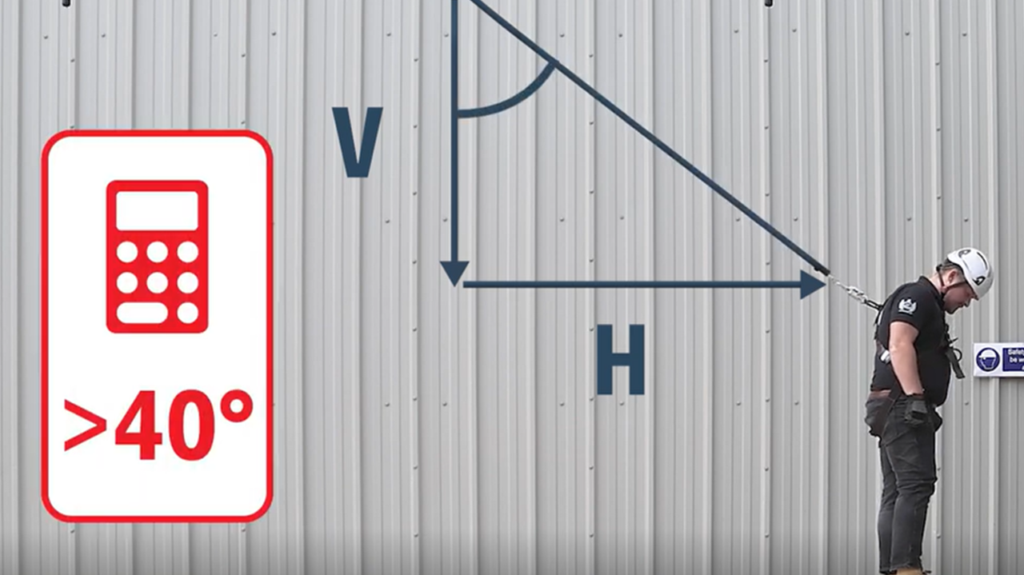- Category: News
PROPER INSTALLATION OF SAFETY EQUIPMENT FOR WORKING AT HEIGHTS: GUIDELINES FOR SAFE USE

Proper installation of safety equipment for working at heights is crucial for protecting workers in the event of a fall. Required safety clearances must be calculated accurately to prevent serious injuries from falls onto the ground or other surfaces. This article examines the key factors that need to be considered when determining safety distances for various types of fall protection systems.
Calculating Safety Clearances
To protect the user in the event of a fall, there must be sufficient clearance from the ground or any other structures that could cause injury. The distance from the anchor point to the user’s feet after a fall is typically calculated as 2 meters, taking into account the user’s height and the elongation of the safety harness. In addition, an extra 1-meter safety margin is recommended to ensure the user remains secure and avoids impact with other objects or structures.
Types of Fall Alarm Systems
- Fall Restraint Systems (Fall Arrest Systems)The calculation of safety clearance depends on the length of the equipment as well as features such as shock absorbers. The combination of these factors is critical to ensure worker safety and prevent serious injuries.
- Self-retracting pipes (Self–Retractable Lifelines – SRLs)SRLs operate similarly to car seat belts, requiring a shorter distance to activate and arrest a fall. These systems offer greater flexibility, allowing them to be used in areas with limited space.
- Guided Fall Arresters (Guided Type Fall Arresters)Calculations for guided fall systems are similar to those for SRLs, but the length of the energy absorber, if present, must also be considered. Safety clearances take into account free fall, brake operation, and the elongation of the safety harness.
Factors Affecting Safety Clearance
- Connection DistanceThe distance from the equipment’s anchor point to the user’s body is critical for calculating the required safety clearance.
- System Adjustment According to EquipmentDepending on the type of equipment (e.g., harnesses or lifelines), the required safety distance may vary. Careful assessment of the equipment’s characteristics is therefore essential.
- Harness Elongation and Other Factors: Safety harnesses and shock-absorbing systems may extend the distance after a fall, so they must be calculated accurately.
The Importance of Risk Analysis
Accurately assessing the required safety clearances is critical to prevent serious injuries. Before any work at heights, a comprehensive risk analysis must be conducted. Those responsible for planning and managing work at heights should have the necessary training and be fully knowledgeable about the relevant safety regulations and standards.
Visit jsp-go.com to use the free-fall clearance calculators. Simply enter information about your equipment type and receive immediate guidance on the recommended distance required for safe work.
